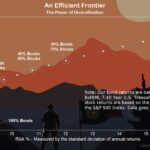LA Sprawl or Dynamic Collage
Not everything can be measured in dollars and cents, calculates Jerald Podair in NRO. That also includes LA. With the loss of humble homes, craftsman bungalows, and magnificent cliffhangers in Pacific Palisades, Malibu, Pasadena, the LA fires, fueled by the notorious Santa Ana winds, took down some of the best of LA’s history and culture. LA’s layered look resulted in energetic experimentations. It’s style, notes one prominent architect, was not a sprawl but a “dynamic collage.”
Indelible Victims
The Will Rogers Ranch House in Pacific Palisades is gone, burned in the wildfire. Like so many other Angelenos and their descendants, the Oklahoma Territory–bred Rogers went west during the first decades of the 20th century to find his fortune — in his case, in the movies. Rogers brought his brand of homespun, plainspoken humor with him from the Plains and made it a part of the culture of his new city. He represented the hundreds of thousands of migrants from the Midwest and South who poured into Los Angeles, some fleeing the Dust Bowl during the Great Depression, others seeking job opportunities in the defense industries that made Los Angeles one of America’s “arsenals of democracy” during World War II. “The Folks” — that’s what one observer called them —were Will Rogers’s people.
Rogers died in a plane crash in 1935, but his ranch house overlooking the Pacific, complete with stables and corrals, was where Oklahoma met L.A. It was The Folks’ house, too, symbolizing one of the greatest and most successful internal migrations in our nation’s history. Now it no longer exists.
The Zane Grey Estate in Altadena. It’s gone, too. Grey grew up in Ohio but had the West in his blood. He abandoned a career in dentistry to write novels, heavy on the mythology of the “Old West.” In 1918, after selling his Riders of the Purple Sage to Hollywood, he moved to Los Angeles to market his books to the movie industry. For the next 20 years, Grey and his family lived in a mansion on manicured grounds on East Mariposa Street in Altadena, as he churned out dozens of novels glorifying the virtues of rugged individualism and masculine virtues in the West of his imagination, many of them brought to life by the mythmaking movie-production machine nearby.
After Grey’s death in 1939, the estate’s grounds were sold off, but the house remained as a reminder of the Old West come to Hollywood, until it burned in the early days of the Eaton fire. In a sad example of another fleeting myth, the house had been advertised as fireproof.
“LA Style,” Now a Pile of Rubble, Ashes
The Benedict and Nancy Freedman House in Pacific Palisades was designed in 1949 by Richard Neutra, an Austrian-born architect who brought modernist styles to Los Angeles. The Freedman House exemplified Neutra’s work, which closely complemented L.A.’s natural environment.
Open and airy, with tall windows, glass sidings, and high ceilings, it offered a spacious “feel” that belied its relatively modest size. While a second floor was eventually added, changing its look somewhat, the house remained an example of mid-century modernist architecture, which was as much a part of “L.A. style” as shorts and sunglasses. Now it is a pile of rubble and ashes.
Accompanying Sarah Karnasiewicz’s article the WSJ are photos of the magnificent Andrew McNally House, considered “one of California’s first celebrity compounds”. The estate was built by Frederick Roehrig for the co-founder of the Rand McNally map company when the hamlet of Altadena was just an Edenic frontier.
The property was among the earliest to embody the idea of California as a marketable paradise, said architectural historian Sam Watters. Weeks after wildfires burned a swath through L.A.’s historic housing stock, much remains uncertain, admits Sarah Karnasiewicz.
But among design professionals, conversations about rebuilding started almost as soon as the blazes began. “We’ve seen a huge rally of architects and planners stepping up who want to be involved,” reports Kahle, who acts as commissioner for the Historical Records and Landmarks Commission for Unincorporated L.A. County.
Ultimately, the best outcomes will be a result of creative thinking, not mere cloning, said Sandmeier.
From Sarah Karnasiewicz,
“In preservation, we talk a lot about ‘false history.’ I could never reconstruct my grandfather’s house exactly as it was, and I’m not sure I’d want to. It would never be the same.”
If you’re willing to fight for Main Street America, click here to sign up for the Richardcyoung.com free weekly email.





